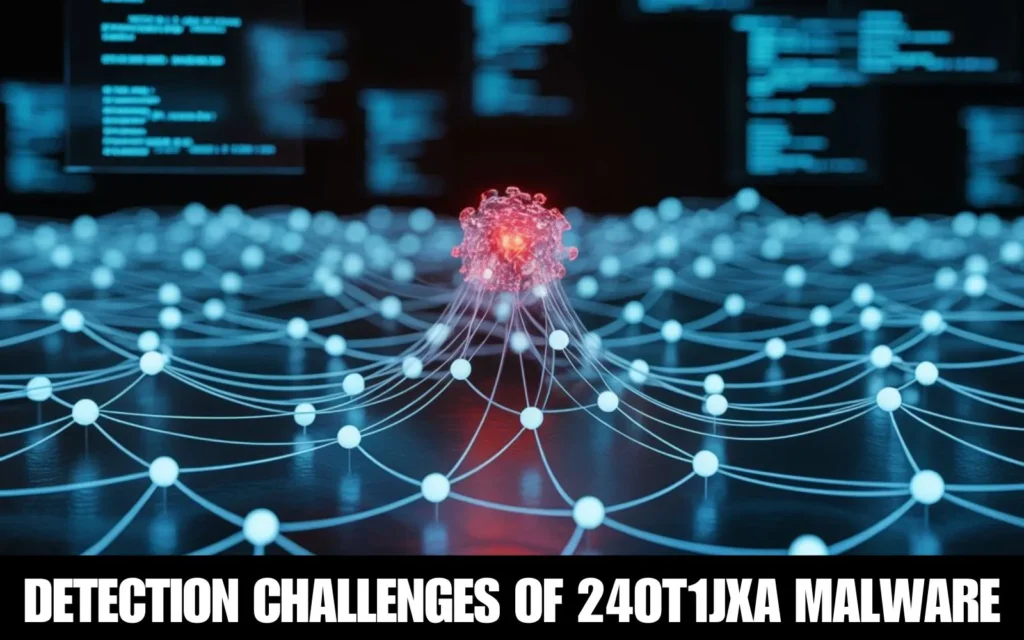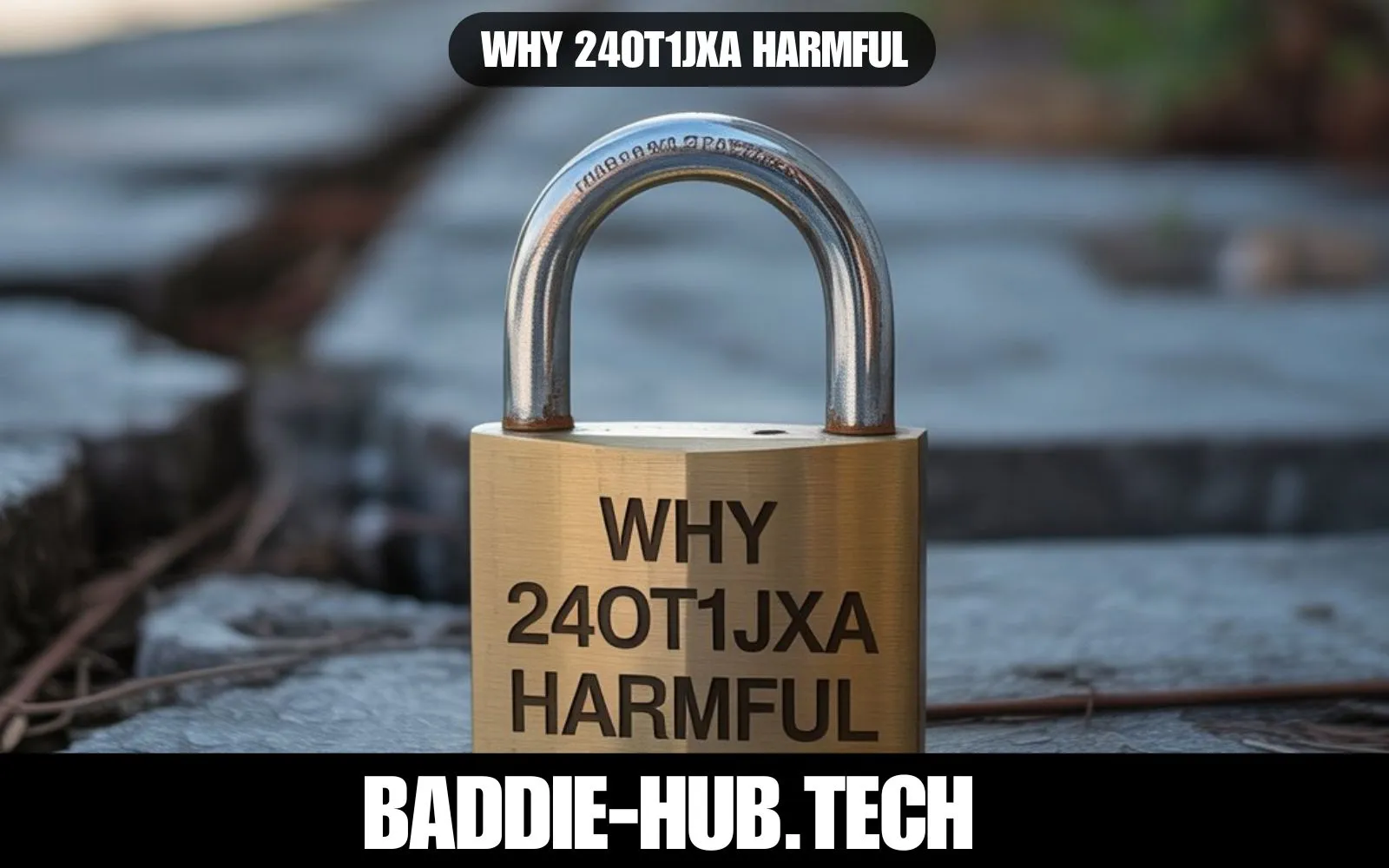Introduction
In today’s technology-driven world, cyber threats are becoming more sophisticated, with malware evolving rapidly to evade detection. One of the most dangerous emerging threats is 24ot1jxa malware, a polymorphic and stealthy digital threat capable of infiltrating systems silently. Understanding why 24ot1jxa harmful is critical for both individuals and organizations seeking to protect sensitive data and maintain system integrity. This article explores spyware, Trojans, RATs, stealthy infections, system compromise, network spread, evading detection, and digital threats, providing actionable insights on how to detect, remove, and prevent this malware.
Understanding Why 24ot1jxa is Harmful in Modern Technology
1. Defining 24ot1jxa Malware
24ot1jxa malware is a highly sophisticated program designed to infiltrate systems silently. Acting as a malware identifier, it evades traditional antivirus software and often remains undetected until significant damage occurs. Its stealthy behavior makes it a silent cyber threat, capable of accessing sensitive data without triggering alarms.
2. Why Is 24ot1jxa Harmful Compared to Traditional Malware?
Unlike conventional malware, 24ot1jxa lies in its polymorphic nature. It continuously modifies its code to avoid signature-based detection, making removal and detection significantly more difficult. Its ability to remain hidden while causing system compromise highlights its uniqueness as a threat.
3. Technology Category Relevance
In the Technology category, 24ot1jxa malware represents a significant digital threat, impacting everything from personal computers to enterprise networks. Understanding why 24ot1jxa is harmful is essential to securing environments and preventing catastrophic data breaches.
The Core Characteristics of 24ot1jxa Malware
1. Polymorphic / Obfuscated Code Behavior
A defining feature of 24ot1jxa malware is its constantly changing code, which helps it avoid detection.. Its code continuously evolves, enabling it to bypass security measures. As a malware identifier, it is particularly hard to detect and requires advanced cybersecurity tools for effective mitigation.
2. Stealth and Silent Operation
A defining feature that makes 24ot1jxa harmful is its stealth malware operation. It runs silently in the background, consuming resources, spying on user activity, and harvesting sensitive data without any noticeable signs of infection.
3. Remote Access Capabilities (RAT)
Many variants of 24ot1jxa malware include remote access Trojan (RAT) functionalities. This allows attackers to gain full control over infected systems, exfiltrating data, monitoring user activities, and even deploying additional malicious programs.
Why 24ot1jxa is Harmful for Individuals and Businesses
1. Data Theft and Privacy Invasion
The most critical reason why 24ot1jxa is harmful is its ability to conduct data theft. Sensitive data such as account information, financial records, and access credentials can be compromised, putting both individuals and organizations at serious risk of unauthorized access and privacy breaches.
2. Financial Damages from Cyber Threats
In addition to compromising privacy, 24ot1jxa malware can lead to significant monetary and operational damages. Through ransomware infection tactics or facilitating phishing attacks, this malware can lead to monetary theft, fraudulent transactions, or costly system restorations.
3. System Performance and Stability Issues
In addition to data compromise, why is 24ot1jxa harmful and manifests in system instability. High CPU usage, unexpected crashes, and sluggish performance are common symptoms of stealthy infections caused by this malware.
Infection Vectors of 24ot1jxa Malware
1. Phishing Emails and Fake Updates
Attackers often deliver 24ot1jxa malware through phishing attacks and bundled software attacks. Fake update notifications and deceptive emails trick users into downloading malicious files, allowing malware to silently infiltrate systems.
2. Drive-by Downloads and USB Spread
Another prevalent vector is through malicious USBs and drive-by downloads. By exploiting weak points in software or user negligence, why 24ot1jxa harmful spreads effortlessly across devices.
3. Software Vulnerabilities and Exploits
Outdated software with unpatched vulnerabilities provides an entry for 24ot1jxa malware. This approach exploits system weaknesses while avoiding detection, further proving why 24ot1jxa is harmful in modern networks.
Technical Analysis – How 24ot1jxa Spreads Across Networks
1. Network Propagation Mechanisms
24ot1jxa malware spreads rapidly through networks by exploiting open connections and weak security protocols. Its network spread capabilities make it a digital threat for both small and large organizations.
2. Lateral Movement in IT Environments
Once inside a network, the malware moves laterally, infecting multiple endpoints. The system compromise potential makes 24ot1jxa harmful, especially critical for enterprises with interconnected systems.
3. Why 24ot1jxa Is Harmful to Cloud and IoT Systems
The integration of cloud services and IoT devices introduces additional vulnerabilities. 24ot1jxa malware can exploit these, highlighting its status as a persistent digital threat and compliance risk.
Detection Challenges of 24ot1jxa Malware

1. Evasion of Antivirus and Signature Scans
Conventional antivirus programs often fail to detect stealthy malware such as 24ot1jxa due to its advanced ability to bypass security measures. Signature-based scanning is insufficient to detect constantly evolving threats.
2. Need for Advanced Endpoint Detection (EDR)
Implementing EDR and real-time monitoring tools is crucial. As a malware identifier, these tools provide forensic insights and early detection of why 24ot1jxa harmful before significant damage occurs.
3. Early Warning Signs for Users
Users should watch for abnormal system behavior such as unexplained CPU spikes, crashes, or network slowdowns. Recognizing these signs helps in understanding why 24ot1jxa is harmful and responding proactively.
Consequences of Ignoring Why 24ot1jxa Harmful
1. Data Breaches and Compliance Penalties
Overlooking 24ot1jxa malware may result in significant data breaches. Organizations may face legal penalties under GDPR or HIPAA, underlining the importance of addressing why 24ot1jxa is harmful.
2. Ransomware and Financial Losses
This malware may facilitate ransomware-like behavior, extorting users or organizations. Financial and reputational damages escalate rapidly if why 24ot1jxa harmful is underestimated.
3. Environmental and Ethical Impacts
Persistent infections increase energy consumption and electronic waste, demonstrating the environmental and ethical impact of ignoring why 24ot1jxa is harmful.
How to Detect and Remove 24ot1jxa Malware
1. Step-by-Step Malware Removal Process
Safe removal involves booting in safe mode, isolating infected devices, and applying forensic cleaning procedures. These steps directly combat the stealthy 24ot1jxa malware.
2. Recommended Cybersecurity Tools
Advanced EDR, malware scanning, and real-time monitoring tools are essential. They assist in identifying why 24ot1jxa harmful and mitigating potential system compromise.
3. Professional vs. DIY Removal
While some users may attempt DIY removal, consulting cybersecurity professionals ensures full eradication and prevents residual malware from continuing the network.
Proven Prevention Strategies Against 24ot1jxa
1. Regular Updates and Patch Management
Keeping software updated and applying patches addresses vulnerabilities that 24ot1jxa malware exploits, reducing why 24ot1jxa is harmful risks.
2. Multi-Factor Authentication (MFA)
Implementing MFA protects accounts from unauthorized access, limiting the potential damage of remote access Trojans embedded in 24ot1jxa malware.
3. Security Training and Awareness
Educating users on phishing, fake updates, and social engineering attacks significantly decreases the chance of silent malware threat 24ot1jxa spreading across networks.
Why Addressing 24ot1jxa Harmful Builds Stronger Cybersecurity
1. Importance of Proactive Defense
Proactively monitoring systems and preparing incident response plans ensures that organizations understand why 24ot1jxa harmful and can act swiftly.
2. Building a Cybersecurity Culture in Organizations
Awareness and best practices cultivate resilience against threats, reinforcing the knowledge of 24ot1jxa malware harm.
3. Future of Cyber Threats Beyond 24ot1jxa
As malware continues to evolve, understanding why 24ot1jxa is harmful prepares organizations for emerging threats and digital risk management.
FAQS
Q1. Why is 24ot1jxa harmful for personal data security?
It can silently steal login credentials, banking information, and personal data, making privacy a critical concern.
Q2. How does 24ot1jxa malware spread across devices?
Through phishing emails, fake updates, drive-by downloads, and infected USBs, leading to network-wide compromise.
Q3. Can traditional antivirus detect why 24ot1jxa harmful?
Signature-based antivirus tools often fail due to its polymorphic and stealthy behavior; advanced EDR solutions are recommended.
Q4. What are the best prevention methods for why 24ot1jxa harmful?
Regular updates, multi-factor authentication, security training, and real-time monitoring are essential preventive measures.
Q5. What makes 24ot1jxa malware more dangerous than typical threats?
Its ability to evade detection, steal data, control systems remotely, and propagate across networks makes it particularly dangerous.
Also Read: “a fan of captivating performances plutoscreen“
Conclusion
In summary, understanding why 24ot1jxa harmful is critical in today’s technological landscape. Its polymorphic code, stealth operation, RAT capabilities, and data theft potential make it one of the most dangerous cyber threats. By implementing detection, removal, and prevention strategies, organizations and individuals can mitigate risk, protect sensitive data, and maintain system integrity. Awareness of why 24ot1jxa is harmful empowers proactive cybersecurity measures, safeguarding digital environments against current and future malware threats.





Leave a Reply